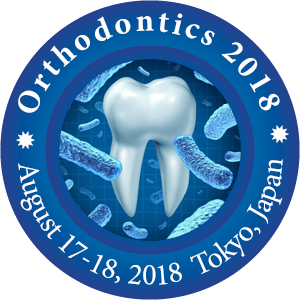
Hugo Terrones Garrido
University of Nuevo Leon, Mexico
Title: Distalization of the Maxillary Posterior Segments Using Efficient Miniscrew Implant Mechanics
Biography
Biography: Hugo Terrones Garrido
Abstract
Objectives: To show how the posterior segments of the maxillary dentition can be efficiently distalized by using palatal Miniscrew implants and a lingual bonded splint.
Methods: A 14-year-old patient with class II malocclusion was treated by using a custom lingual splint (laboratory made) and bonding it to the palatal surfaces of the maxillary posterior teeth (first premolar, second premolar, first molar and second molar).
This splint has one guiding tube per side at the level of the each first molar where the trans palatal distalizing sliding tube is placed. Two Miniscrew implants are placed in the parasagital region of the palate at the level of the first molar so that the distalizer is activated using 250grs of force per side. This activation creates two forces, one above and one below the center of resistance of the posterior segment that will distalize the whole posterior block of teeth as one unit with minimum tipping. The device is only activated once until the teeth have moved distally and more activation is required.
Results: in 6 months of treatment a distalization of 6 mm of the whole maxillary posterior segments was observed with minimum tipping. After this, retraction and space closure of the maxillary was possible to finish the case with good oclusion.
Conclusions: this case has shown this method to be a simple way to distalize the maxillary posterior dentition. Vertical control was also possible by using this mechanics, when evaluated by radiographs.

